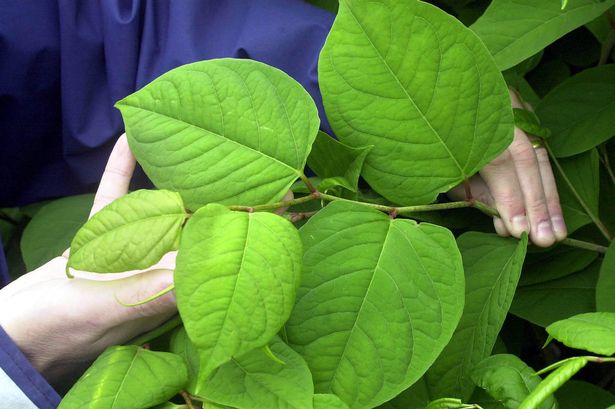Japanese knotweed can emerge through cracks in concrete, tarmac driveways, pathways, drains and cavity walls Japanese knotweed(Image: Barry Batchelor/PA Wire)
Japanese knotweed(Image: Barry Batchelor/PA Wire)
Japanese Knotweed can be detrimental to outdoor spaces. The invasive perennial weed is fast-growing and can cause damage to buildings and structures.
The ECHO revealed Merseyside’s knotweed hotspots for 2025 using the latest data from Environet’s online tracker. There are a total of 2,963 verified knotweed sightings in Merseyside, making the region the second worst affected area after Bristol.
There are four common invasive knotweed plant species in the UK; Japanese knotweed, dwarf knotweed, giant knotweed and bohemian knotweed. The plants tend to grow in most soil conditions found in the UK and manmade habitats such as waste ground, roadsides, railway embankments adnmd cuttings and waste material from mining or quarrying. It can also be found on rivers and streams.
What do to if you have knotweed on your land or property?
Homeowners should stop knotweed from spreading off your land or property.
According to the Government website, people do not legally have to remove Japanese knotweed from their land if it is causing a nuisance.
But people can be prosectuted for causing it to spread into the wild.
Soil or plant material that is contaminated can cause ecological damage and may be classed as controlled waste.
How to stop knotweed from spreading?
There are ways of stopping knotweed from spreading. However, the Government website advises not to remove knotweed unless you have the appropriate skills and experiences. It is advised to contact a specialist company.
If you want to get rid of knotweed, you can spray or inject the stems with chemicals, by using approved herbicides.
It will need to be resprayed and can take at least three years of treatment.
If you plan to bury knotweed, you must inform the Environment Agency at least one month before doing so.
You can dispose of the dead brown canes by composting on site, as long as they’re cut (not pulled) a minimum of 10cm above the crown.
More information can be found on the Government website here.
Merseyside’s top 10 Japanese knotweed hotspotsLiverpool – 797 incidencesSt. Helens – 683 incidencesSouthport – 233 incidencesNewton-le-Willows – 221 incidencesHuyton with Roby – 167 incidencesPrescot – 140 incidencesHaydock – 134 incidencesBootle – 121 incidencesKirkby – 98 incidencesWhiston – 78 incidences


AloJapan.com